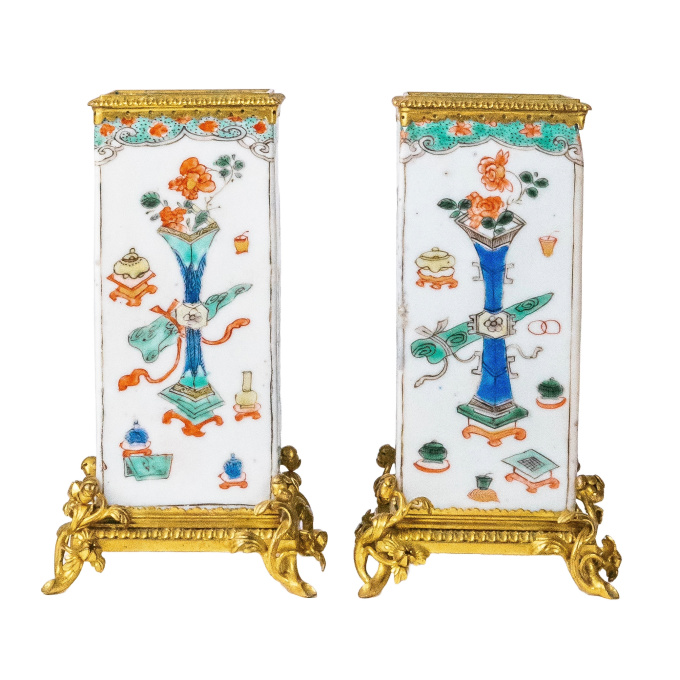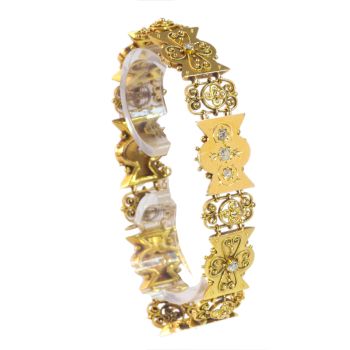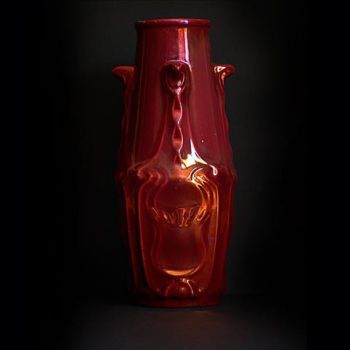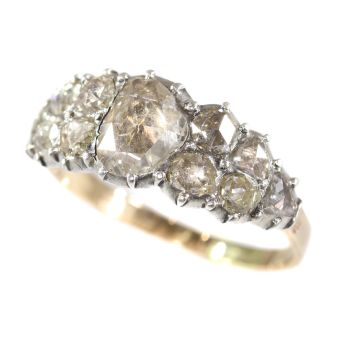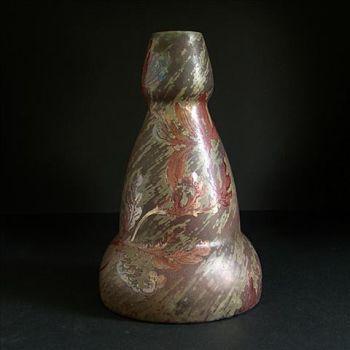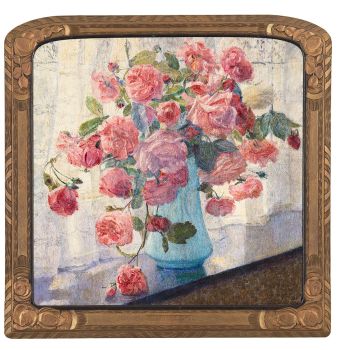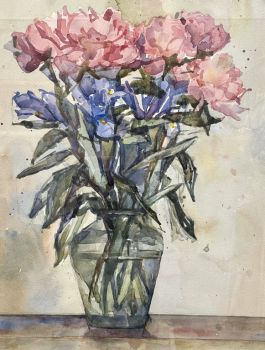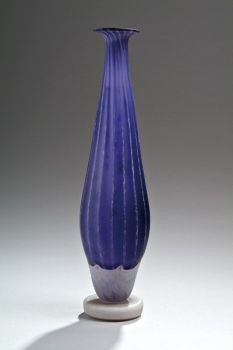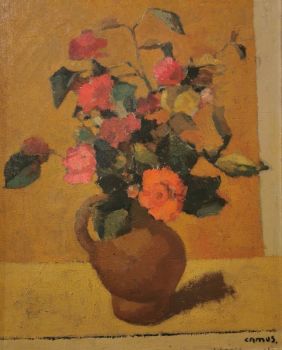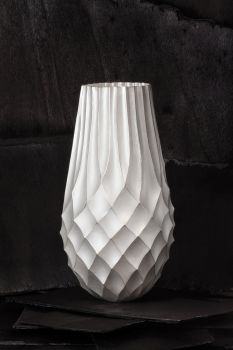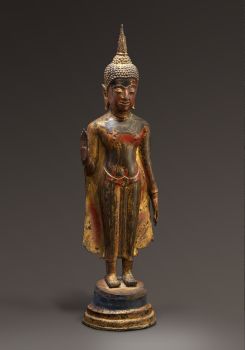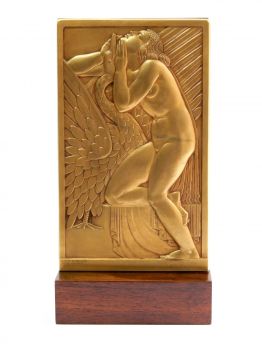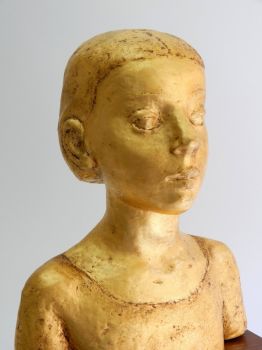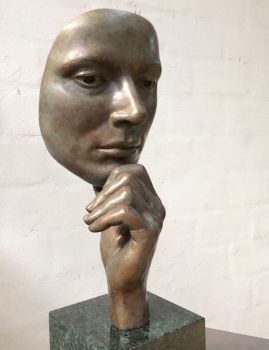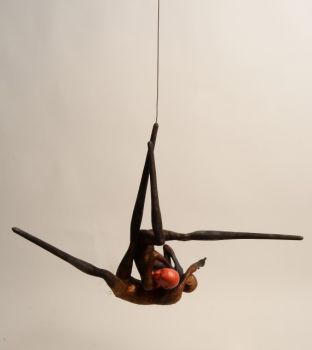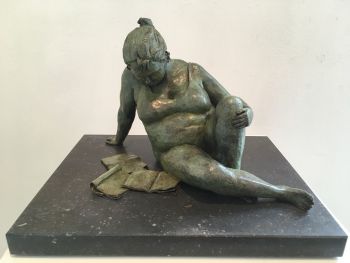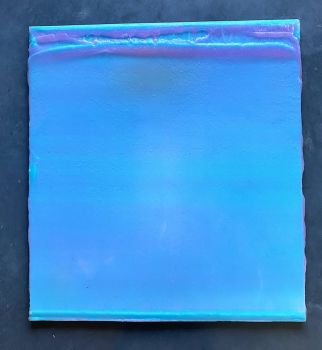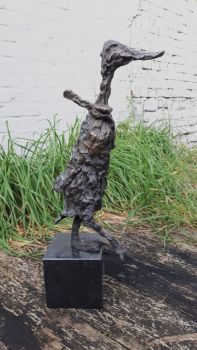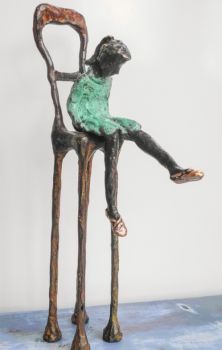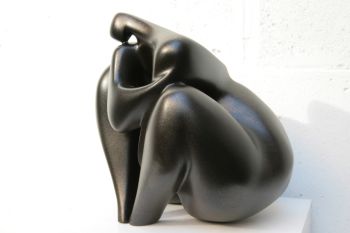A pair of famille verte vases, 18th century Kangxi 1662 - 1722
Artista Sconosciuto
Bronzo doratoPorcellanaPorcellana cineseMetallo
17 cm
ConditionVery good
Attualmente non disponibile tramite Gallerease
- A proposito di opere d'arteA pair of Kangxi period (1662-1722) famille verte vases with the ‘Hundred Treasures’ decor and gilt-bronze mounts, around 1700, Jingdezhen, China.
Famille Verte
Dimensions: 16.8 cm. height.
This exceptional pair of vases has a fine decoration in famille verte style. The use of this style and colours emerged from 1670, during the Kangxi period (1662-1722). Famille verte can be characterized by the use of a combination of the colours green (predominantly), red, blue and yellow. The cobalt blue could be underglaze but it also appears overglaze as the other colours.
On two sides of both vases the ‘Hundred Treasures’ (or the ‘Hundred Antiques’, baigu 百古) are shown. This is a term used for a collection of Chinese symbols or symbolical items that often are depicted in Chinese art. It comprises precious objects, scholar objects and symbols, often referring to the four Chinese ancient arts. The Hundred Treasures are not specifically defined but they comprise specific sets called the ‘Eight Treasures’ (babao 八宝) and the ‘Four Treasures’.
On one side, we can see a resplendent vase with peonies in it, surrounded by treasures. On the opposite side, a beautifully detailed vase as well is shown in the middle, with peacock feathers and blood coral in it. The peacock feathers represent an official rank. The coral stands for longevity. This is very expectational and rich decoration. Also on this side the vase is surrounded by the Hundred Treasures including precious porcelain objects. The other two sides show a natural landscape with rocks overgrown by plants and flowers. Around the flowers, butterflies are flying. The vases are finished with fine gilt-bronze mounts to the top and bottom. The bottom mounts each have four elegant feet surrounded by moulded roses. The insides have bronze compartments as well. These compartments can be lashed out and could be used to add water to the vase without damaging the porcelain paste. The bronze mounts are crafted in Europe (France), in the 19th century.
Condition: good, some small fritting to the side. - A proposito di opere artista
Può succedere che un artista o un creatore sia sconosciuto.
Alcune opere non sono determinate da chi sono state realizzate o sono state realizzate da (un gruppo di) artigiani. Esempi sono statue dell'antichità, mobili, specchi o firme non chiare o leggibili ma anche alcune opere non sono affatto firmate.
Inoltre puoi trovare la seguente descrizione:
•"Attribuito a …." A loro avviso probabilmente opera dell'artista, almeno in parte
•“Studio di ….” o “Officina di” A loro avviso un'opera eseguita nello studio o nella bottega dell'artista, eventualmente sotto la sua supervisione
•“Cerchio di…” A loro avviso un'opera del periodo dell'artista che mostra la sua influenza, strettamente legata all'artista ma non necessariamente al suo allievo
•"Stile di..." o "Seguace di..." A loro avviso un'opera eseguita nello stile dell'artista ma non necessariamente da un allievo; può essere contemporaneo o quasi contemporaneo
•“Modalità di…” A loro avviso un'opera nello stile dell'artista ma di epoca successiva
•"Dopo …." A loro avviso una copia (di qualsiasi data) di un'opera dell'artista
•“Firmato…”, “Datato…” o “Iscritto” A loro avviso l'opera è stata firmata/datata/inscritta dall'artista. L'aggiunta di un punto interrogativo indica un elemento di dubbio
•"Con firma....", "Con data...", "Con iscrizione..." o “Riporta firma/data/iscrizione” a loro avviso la firma/data/iscrizione è stata aggiunta da qualcuno diverso dall'artista
Artwork details
Related artworks
- 1 - 4 / 12
Artista Sconosciuto
Series of 6 Chinese cups and saucers (Yongzheng period)1722 - 1735
Prezzo su richiestaKuipers Kunst & Antiek
1 - 4 / 12- 1 - 4 / 24
Herman Bogman jr.
Flower still life of a nasturtium in a blue vase1950 - 1965
Prezzo su richiestaAdelwein Kunst
Artista Sconosciuto
Gobelet vénitien ailé1624 - 1626
Prezzo su richiestaPeter Korf de Gidts - Antiquairs
Gabriel Argy-Rousseau
Gabriël Argy-Rousseau – Crabes et Algues vase – 19201920 - 1929
Prezzo su richiestaAntiques Emporium
1 - 4 / 24Artista Sconosciuto
Series of 6 Chinese cups and saucers (Yongzheng period)1722 - 1735
Prezzo su richiestaKuipers Kunst & Antiek
1 - 4 / 24

